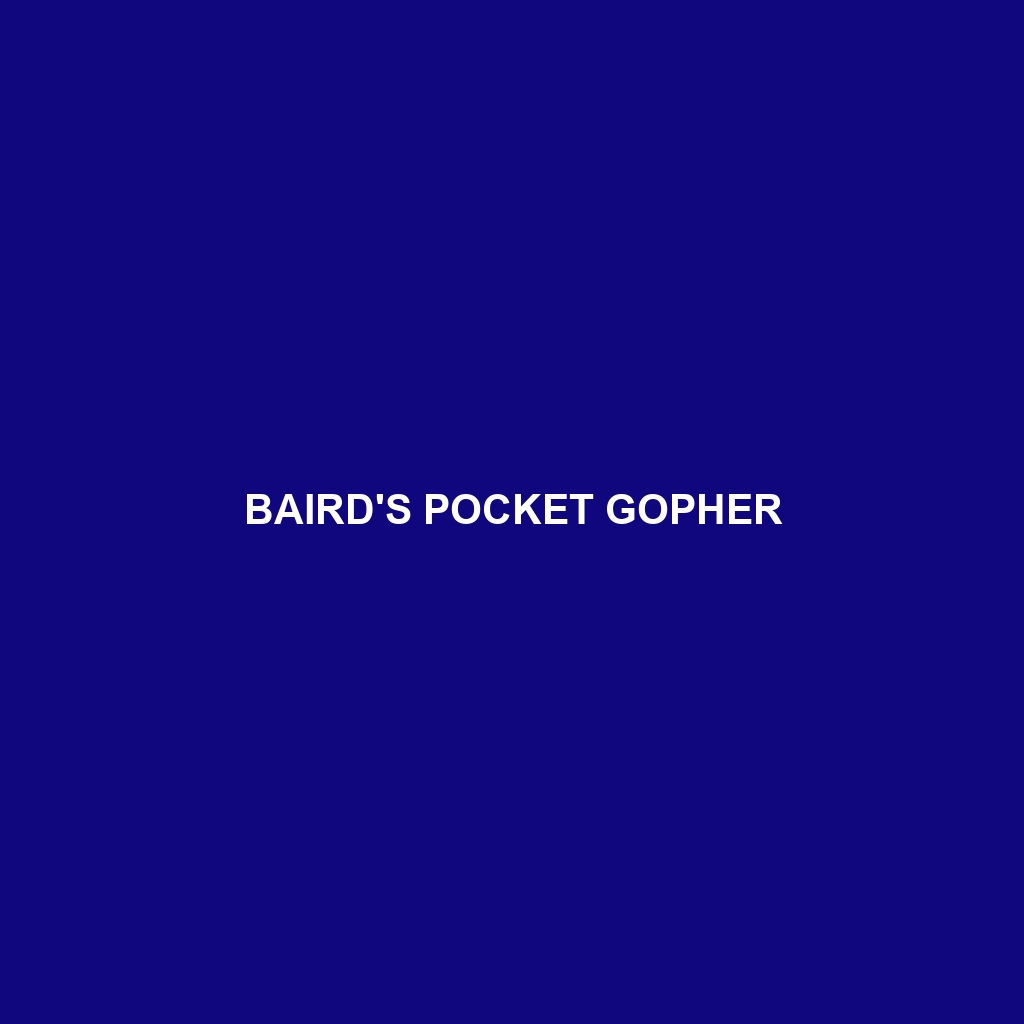Baird’s Pocket Gopher
Common Name: Baird’s Pocket Gopher
Scientific Name: Geomys breviceps
Habitat
Baird’s Pocket Gopher is primarily found in the central and northern regions of Mexico, extending into the southern Great Plains of the United States. These gophers prefer habitats characterized by sandy or loamy soils that facilitate their burrowing activities. They thrive in grasslands, prairies, and open spaces with a sufficient food supply.
Physical Characteristics
Baird’s Pocket Gopher is a medium-sized mammal, typically measuring about 6 to 10 inches in length, with a distinct, robust body shape. They possess soft, dense fur that ranges from tawny to grayish brown, providing excellent camouflage in their native environments. Their small, external cheek pouches and powerful claws are distinctive features, adapted for digging.
Behavior
This species exhibits a solitary lifestyle, often spending most of its life underground in an extensive network of tunnels. Baird’s Pocket Gopher is primarily nocturnal, engaging in foraging and excavation activities during the cooler hours. Their burrowing behavior significantly impacts soil aeration and drainage, making them critical to their ecosystems.
Diet
Baird’s Pocket Gopher primarily feeds on roots, tubers, and various herbaceous plants. They play a crucial role in their habitat by controlling plant growth, as their foraging habits help to aerate the soil while promoting plant diversity. This diet not only sustains them but also supports the health of the ecosystem.
Reproduction
The breeding season for Baird’s Pocket Gopher generally occurs in the spring. Females typically give birth to a litter of 3 to 5 offspring after a gestation period of approximately 21 days. The young are born blind and hairless, relying on their mother’s care until they mature enough to venture out of the burrow.
Conservation Status
Currently, Baird’s Pocket Gopher is classified as a species of concern due to habitat loss and fragmentation. Although it is not listed as endangered, its populations are vulnerable to agricultural expansion and urban development, which threaten their natural habitats.
Interesting Facts
Baird’s Pocket Gopher has an extraordinary ability to dig rapidly, creating extensive tunnel systems that can stretch for over 300 feet. Their cheek pouches not only help in transporting food but also in aiding the digging process, as they can store food underground for later consumption.
Role in Ecosystem
Baird’s Pocket Gopher plays a pivotal role in their ecosystem by aerating the soil and facilitating nutrient redistribution. Their burrowing activities can enhance ground water infiltration and improve the overall health of the soil structure, benefiting various plant and animal species within their habitat.
